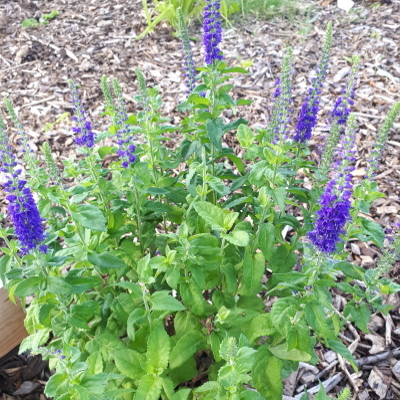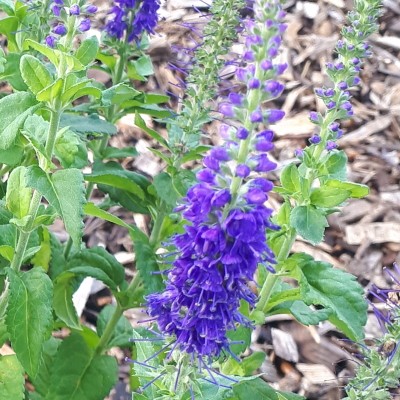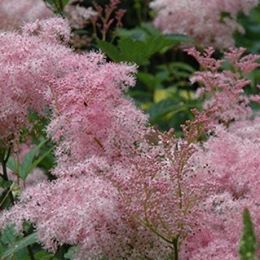-
Out of stock
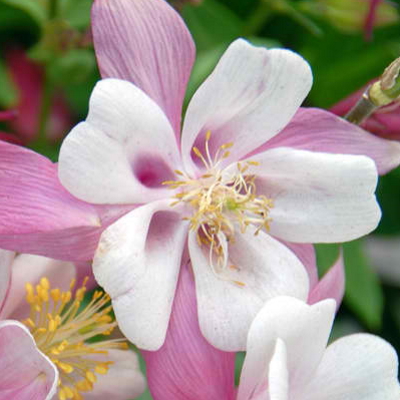 Beautiful pastel columbine seeds approximately 100 count. Learn: How to grow Columbine plants
Beautiful pastel columbine seeds approximately 100 count. Learn: How to grow Columbine plants -
Out of stock
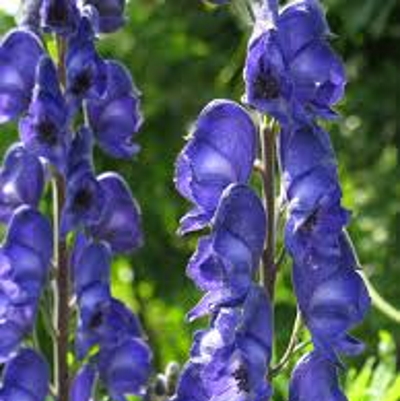 The monkshood plant is an herbaceous wildflower that can be found growing in mountain meadows throughout the northern hemisphere. The plant gets its name from the shape of the posterior sepal of the flowers, which resembles the cowls worn by monks. Also known as wolfsbane and Aconitum, monkshood has become popular as a garden addition because of its purple/blue flowers and attractive foliage. Growing 2 to 4 feet (0.5 to 1 m.) tall and 1 to 2 feet (0.5 m.) wide, perennial monkshood is best grown as a background plant. The leaves of the monkshood plant are palmate, meaning hand-shaped, with lobed “fingers” that often have toothed edges and vary in color from light to dark green. In late summer or early fall, it sends up showy spires of purple/blue flowers. Monkshead is not invasive and is both deer and rabbit resistant. However, monkshood, or wolfsbane, is moderately difficult to grow and once planted, doesn’t like to be moved so the best way to grow monkshood is to choose your spot carefully. It sometimes takes a while for it to become established.
The monkshood plant is an herbaceous wildflower that can be found growing in mountain meadows throughout the northern hemisphere. The plant gets its name from the shape of the posterior sepal of the flowers, which resembles the cowls worn by monks. Also known as wolfsbane and Aconitum, monkshood has become popular as a garden addition because of its purple/blue flowers and attractive foliage. Growing 2 to 4 feet (0.5 to 1 m.) tall and 1 to 2 feet (0.5 m.) wide, perennial monkshood is best grown as a background plant. The leaves of the monkshood plant are palmate, meaning hand-shaped, with lobed “fingers” that often have toothed edges and vary in color from light to dark green. In late summer or early fall, it sends up showy spires of purple/blue flowers. Monkshead is not invasive and is both deer and rabbit resistant. However, monkshood, or wolfsbane, is moderately difficult to grow and once planted, doesn’t like to be moved so the best way to grow monkshood is to choose your spot carefully. It sometimes takes a while for it to become established. -
Out of stock
 The Red Robin produces great yields of 2.5 to 4 cm tomatoes. It's compact reaching only 20-30 cm and makes the ultimate cherry tomato with its' fresh sweet taste. They are quite a hardy plant and are easy to grow. Being a determinate tomato successive sowing will ensure a continuous crop. Perfect for indoor or outdoor containers. Matures in 55 days.
The Red Robin produces great yields of 2.5 to 4 cm tomatoes. It's compact reaching only 20-30 cm and makes the ultimate cherry tomato with its' fresh sweet taste. They are quite a hardy plant and are easy to grow. Being a determinate tomato successive sowing will ensure a continuous crop. Perfect for indoor or outdoor containers. Matures in 55 days. -
Out of stock
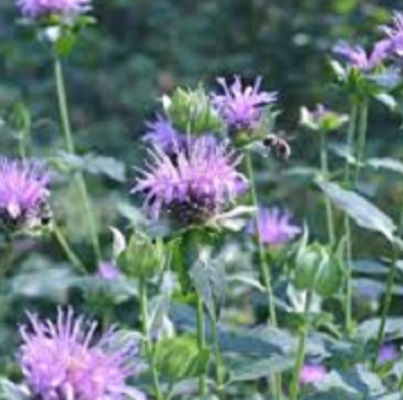 A bee magnet, softly aromatic leaves, and colourful flower heads are just a few lovely characteristics of Bee Balm (Monarda). Guaranteed to create a great impact when planted in masses with its starry explosions of colour burst from mid-summer through until the last frost. Known as bergamot. Leaves can be used in the kitchen before flowers appear.
A bee magnet, softly aromatic leaves, and colourful flower heads are just a few lovely characteristics of Bee Balm (Monarda). Guaranteed to create a great impact when planted in masses with its starry explosions of colour burst from mid-summer through until the last frost. Known as bergamot. Leaves can be used in the kitchen before flowers appear. -
Out of stock
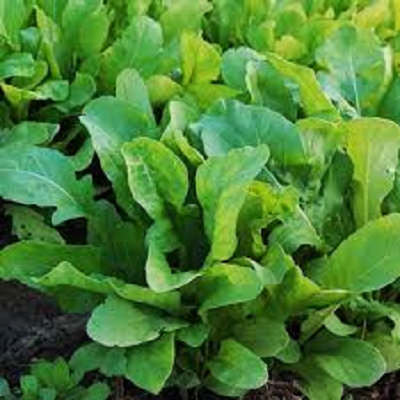 Astro Arugula-Certified Organic Sold as .50 grams which are approximately 250 seeds Grows in 21 days and matures in 40 days Both heat and cold tolerant. Astro is often considered the best of all Arugula Varieties.
Astro Arugula-Certified Organic Sold as .50 grams which are approximately 250 seeds Grows in 21 days and matures in 40 days Both heat and cold tolerant. Astro is often considered the best of all Arugula Varieties.Mustard and Cabbage Family (BRASSICACEAE)
Germinates quickly and tolerates cold and hot temperatures well. Performs well as a cut-and-come-again crop. Certified organic, Good cool weather growth, Great for containers, Open-pollinated Astro is perfect for baby greens in early spring and fall. Baby greens are ready to cut in only 21 days. Arugula is very well suited to micro-green growth. With a nutty, spicy taste that is sometimes pungent or peppery, arugula really perks up salads, sandwiches, and even dishes like quiche, soups, or pizza. It is very cold hardy and has a milder flavor when grown in cool weather. -
Out of stock
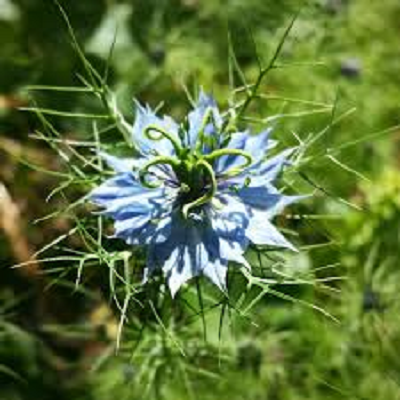
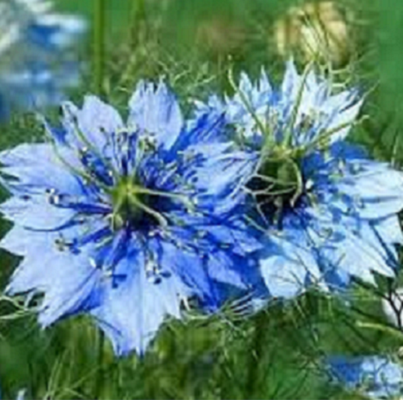 Nigella damascena. Persian Jewels Nigella seeds are also known as Love-in-a-Mist. Its delicate appearance belies its hardy, dependable nature. Pale as a baby flower, Persian Jewel matures to intense shades of violet, blue, white, and pastels in between. Each flower emerges from a tangle of lacy foliage. After blooming, curious-looking fruits ripen, dry, and eventually release seeds for the next season. These distinctive seed heads can be dried for flower arrangements. Everlasting flowers are grown especially for its spiky decorative seed pods. Germinates 10–14 days at 60°. Grow on at 60–65°. Set transplants 6–9" apart. For continuous bloom, direct seed weekly until June. Nigella grows 20–50cm (8–20") tall.
Nigella damascena. Persian Jewels Nigella seeds are also known as Love-in-a-Mist. Its delicate appearance belies its hardy, dependable nature. Pale as a baby flower, Persian Jewel matures to intense shades of violet, blue, white, and pastels in between. Each flower emerges from a tangle of lacy foliage. After blooming, curious-looking fruits ripen, dry, and eventually release seeds for the next season. These distinctive seed heads can be dried for flower arrangements. Everlasting flowers are grown especially for its spiky decorative seed pods. Germinates 10–14 days at 60°. Grow on at 60–65°. Set transplants 6–9" apart. For continuous bloom, direct seed weekly until June. Nigella grows 20–50cm (8–20") tall. -
Out of stock
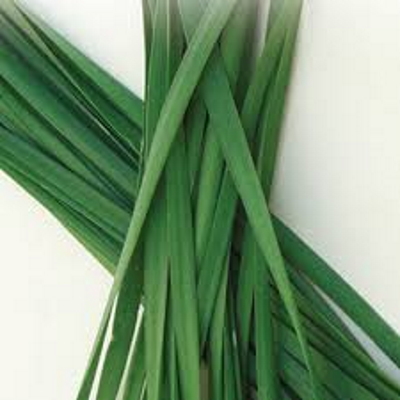 A herb, not a vegetable though related to the onion. This flat-leaf variety of Garlic Chives seeds has a strong garlic flavour and aroma. A welcome palatable alternative to those who like garlic to accompany cheese and soups. Recognized to be an excellent attractant and nectar source for bees and other beneficial insects. Use this herb as companion plants to repel aphids from flowers or vegetables prone to attack. Also called Chinese chives.
A herb, not a vegetable though related to the onion. This flat-leaf variety of Garlic Chives seeds has a strong garlic flavour and aroma. A welcome palatable alternative to those who like garlic to accompany cheese and soups. Recognized to be an excellent attractant and nectar source for bees and other beneficial insects. Use this herb as companion plants to repel aphids from flowers or vegetables prone to attack. Also called Chinese chives. -
Out of stock
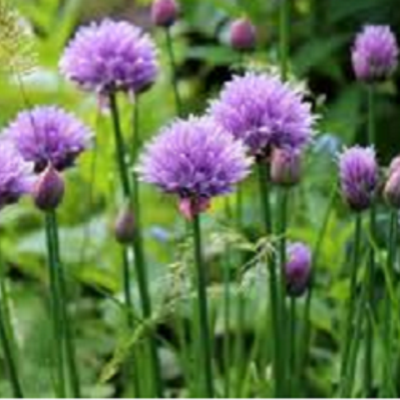 100 Seeds Sow Chives Organic seeds at any time of year. Hardy, perennial, and easy to grow, the chopped stems and pink flowers add a fresh, mild green onion flavour to sandwiches, salads, and baked potatoes. Clumps can be divided in spring or fall. If grown in containers, divide frequently enough to provide for constant lateral growth. Chives are surprisingly hardy and can be harvested all winter if given some protection from extreme cold. They are also quite drought tolerant, so they’re good candidates for xeriscaping. The edible flowers are highly attractive to bumblebees, hoverflies, and other beneficial garden insects. Perennial
100 Seeds Sow Chives Organic seeds at any time of year. Hardy, perennial, and easy to grow, the chopped stems and pink flowers add a fresh, mild green onion flavour to sandwiches, salads, and baked potatoes. Clumps can be divided in spring or fall. If grown in containers, divide frequently enough to provide for constant lateral growth. Chives are surprisingly hardy and can be harvested all winter if given some protection from extreme cold. They are also quite drought tolerant, so they’re good candidates for xeriscaping. The edible flowers are highly attractive to bumblebees, hoverflies, and other beneficial garden insects. Perennial -
Out of stock
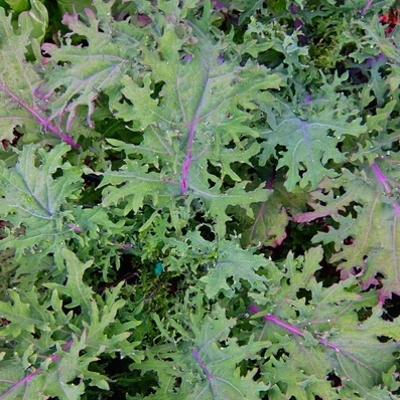 Red Russian Kale Seeds grow leaves that are flat, toothed, grey-green leaves with purple stems and veins really brighten after frosts. Young leaves are tender for salads, the red and purple hues turn a rich, dark green color when cooked. Rich in vitamins and minerals than other greens and disease resistant. If planted early this old-time heirloom kale goes to seed, producing tall towers of yellow flowers followed by edible seed pods. Seed saving is easy with kale, and collect Kale seeds before they drop to prevent unwanted kale for years to come.
Red Russian Kale Seeds grow leaves that are flat, toothed, grey-green leaves with purple stems and veins really brighten after frosts. Young leaves are tender for salads, the red and purple hues turn a rich, dark green color when cooked. Rich in vitamins and minerals than other greens and disease resistant. If planted early this old-time heirloom kale goes to seed, producing tall towers of yellow flowers followed by edible seed pods. Seed saving is easy with kale, and collect Kale seeds before they drop to prevent unwanted kale for years to come. -
Out of stock
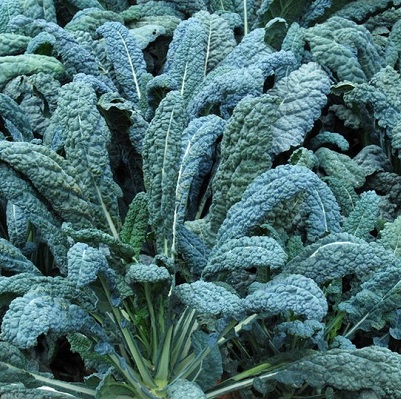 62 days. Brassica oleracea. Open Pollinated. This early variety produces high yields of flavorful blue-green kale leaves. It is sweet and tender. Used fresh in salads, on sandwiches, in soups, or cooked. It is best eaten when leaves are small and tender. The flavour is enhanced by frost! Also known as Dinosaur Kale, Black Majic Kale, Tuscan Kale, Black Cabbage Kale, Black Kale, Black Palm Kale, Cavolo Palmizio Kale, Nero di Toscana Kale, and Tuscan Black Palm Cabbage. Suitable for hydroponics gardening. An excellent choice for home gardens, market growers, and open field production.
62 days. Brassica oleracea. Open Pollinated. This early variety produces high yields of flavorful blue-green kale leaves. It is sweet and tender. Used fresh in salads, on sandwiches, in soups, or cooked. It is best eaten when leaves are small and tender. The flavour is enhanced by frost! Also known as Dinosaur Kale, Black Majic Kale, Tuscan Kale, Black Cabbage Kale, Black Kale, Black Palm Kale, Cavolo Palmizio Kale, Nero di Toscana Kale, and Tuscan Black Palm Cabbage. Suitable for hydroponics gardening. An excellent choice for home gardens, market growers, and open field production. -
Out of stock
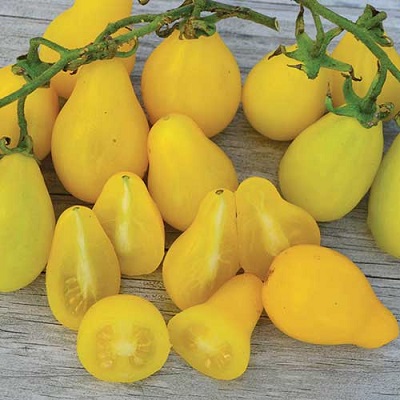 78 days. Solanum lycopersicum. Open Pollinated. The plant produces high yields of 21-30 gram yellow pear-shaped cherry tomatoes. They are mildly very sweet and flavorful. Perfect for salads, garnishes, or culinary creations. Grows in clusters. Low acidity variety. Crack-resistant. The plant requires support, either staking or cages. An excellent choice for home gardens. An heirloom variety dating back to the late 1800s. Disease Resistant: A. Indeterminate.
78 days. Solanum lycopersicum. Open Pollinated. The plant produces high yields of 21-30 gram yellow pear-shaped cherry tomatoes. They are mildly very sweet and flavorful. Perfect for salads, garnishes, or culinary creations. Grows in clusters. Low acidity variety. Crack-resistant. The plant requires support, either staking or cages. An excellent choice for home gardens. An heirloom variety dating back to the late 1800s. Disease Resistant: A. Indeterminate. -
Out of stock
 55 days. Annual. The plant produces flavorful leaves used in salads and to flavor lemonade. The flower stalks and blooms are used as garnishes for summer drinks and desserts and can be candied. The leaves and flowers are used in salads. Leaves can be steamed or sauteed like spinach. Stems can be used like celery. It has a crisp cucumber flavour. Bees and butterflies love it! Try borage flower clusters lightly breaded and deep-fried.
55 days. Annual. The plant produces flavorful leaves used in salads and to flavor lemonade. The flower stalks and blooms are used as garnishes for summer drinks and desserts and can be candied. The leaves and flowers are used in salads. Leaves can be steamed or sauteed like spinach. Stems can be used like celery. It has a crisp cucumber flavour. Bees and butterflies love it! Try borage flower clusters lightly breaded and deep-fried. -
Out of stock
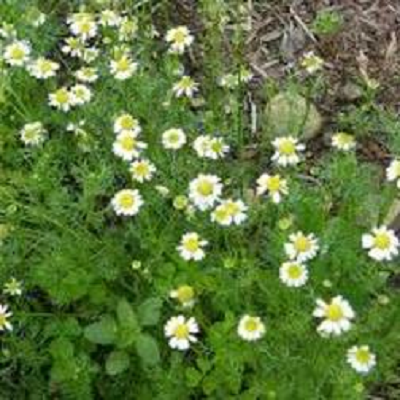
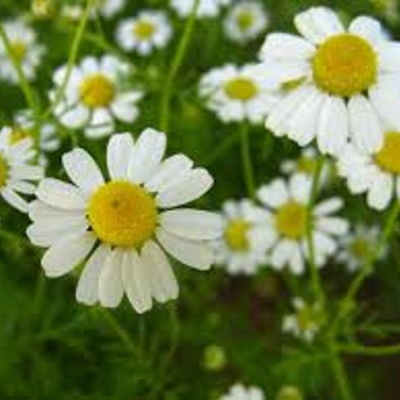 65 days. Matricaria recutita. Annual. The plant is used fresh and dried to make great tea, perfumes, and hair rinse. This variety produces high yields of small white daisy-like flowers. Try fresh chamomile steeped and chilled for a refreshing summer beverage. Package contains: 100 Seeds
65 days. Matricaria recutita. Annual. The plant is used fresh and dried to make great tea, perfumes, and hair rinse. This variety produces high yields of small white daisy-like flowers. Try fresh chamomile steeped and chilled for a refreshing summer beverage. Package contains: 100 Seeds -
Out of stock
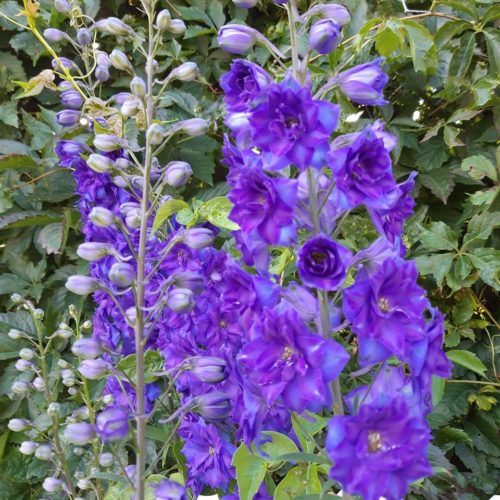 Matures 130-150 days: Also known as Pacific Coast hybrids, Delphinium elatum "Pacific Giant" is a group of regal delphiniums with tall, spiky blooms available in the colors shown. At maturity, the plants reach impressive heights of 1.5-2.5 meters "Pacific Giant" delphiniums are suitable for growing in plant hardiness zones 2 through 9. Long flower-filled spikes bloom in a beautiful blue. The flowers populating the spikes are symmetrically shaped, with huge 8 cm blooms. This delphinium also has mildew resistance.
Matures 130-150 days: Also known as Pacific Coast hybrids, Delphinium elatum "Pacific Giant" is a group of regal delphiniums with tall, spiky blooms available in the colors shown. At maturity, the plants reach impressive heights of 1.5-2.5 meters "Pacific Giant" delphiniums are suitable for growing in plant hardiness zones 2 through 9. Long flower-filled spikes bloom in a beautiful blue. The flowers populating the spikes are symmetrically shaped, with huge 8 cm blooms. This delphinium also has mildew resistance. -
Out of stock
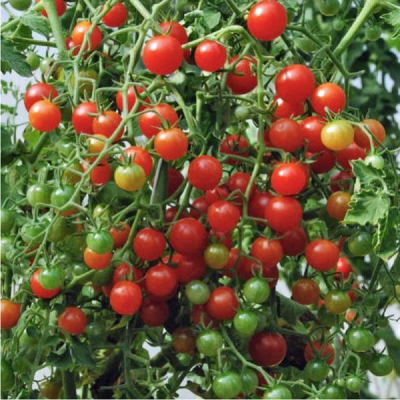 Red Currant plants produce copious quantities of small 1 cm, deep red tomatoes that are exceptionally sweet and packed with flavour. They typically require around 75 days to reach maturity, and make a good choice for containers and hanging baskets, though they are indeterminate growers. Currant tomatoes are native of Peru and Brazil. It was illustrated by Louis Feuille in 1725 Perfect for snacking tomatoes directly from the garden. Great for summer salads. Fruits from early summer until fall frost. Each plant produces 1000's of tiny tomatoes. Best for hanging baskets.
Red Currant plants produce copious quantities of small 1 cm, deep red tomatoes that are exceptionally sweet and packed with flavour. They typically require around 75 days to reach maturity, and make a good choice for containers and hanging baskets, though they are indeterminate growers. Currant tomatoes are native of Peru and Brazil. It was illustrated by Louis Feuille in 1725 Perfect for snacking tomatoes directly from the garden. Great for summer salads. Fruits from early summer until fall frost. Each plant produces 1000's of tiny tomatoes. Best for hanging baskets. -
Out of stock
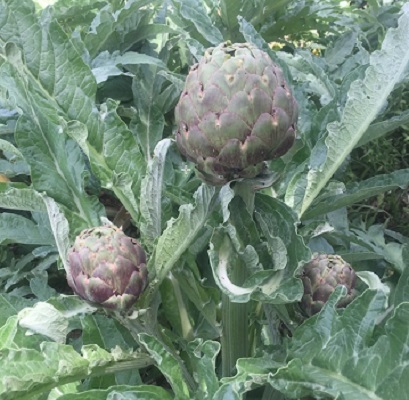
 Start seed indoors in a soil-less mix 8-12 weeks before the last frost date in your area. Sow the seed 6 mm (1/4″) deep and germinate at 21-26 C (70-80 F). When seedlings are 2.5-5 cm (1-2″) high transplant to individual 10 cm (4″) pots and grow on at 15-21 C. Harden off and transplant to the garden after the threat of frost has passed. Artichoke does best in full sun with a deep, organic, fertile soil. Space plants 60-90 cm (24-36″) apart in the row with rows 1.75 m (6′) apart. Keep plants evenly watered and mulch the soil to help preserve soil moisture and keep the soil from becoming too warm in summer. If the soil does become too warm, it can trigger a summer dormant period. Start with a thin layer of mulch and build it up to 10 cm (4″) thick as the plants grow.
Start seed indoors in a soil-less mix 8-12 weeks before the last frost date in your area. Sow the seed 6 mm (1/4″) deep and germinate at 21-26 C (70-80 F). When seedlings are 2.5-5 cm (1-2″) high transplant to individual 10 cm (4″) pots and grow on at 15-21 C. Harden off and transplant to the garden after the threat of frost has passed. Artichoke does best in full sun with a deep, organic, fertile soil. Space plants 60-90 cm (24-36″) apart in the row with rows 1.75 m (6′) apart. Keep plants evenly watered and mulch the soil to help preserve soil moisture and keep the soil from becoming too warm in summer. If the soil does become too warm, it can trigger a summer dormant period. Start with a thin layer of mulch and build it up to 10 cm (4″) thick as the plants grow. -
Out of stock
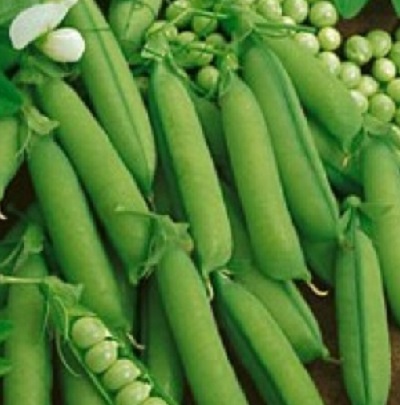 Great for both Spring and Fall planting! Matures in 50-60 days. Expect heavy yields of round, straight, pale green pods, each containing five to eight smooth peas. Peas prefer full sun to partial shade. Space peas 2.5cm-4cm apart. This shorter variety only reaching 90cm (3 feet) a short trellis can be used. They grow best when planted on the crowded side. These are great when eaten fresh in the garden and take only 5-10 days to germinate. They offer 5-7 peas per pod and have a sweet and delicious flavour.
Great for both Spring and Fall planting! Matures in 50-60 days. Expect heavy yields of round, straight, pale green pods, each containing five to eight smooth peas. Peas prefer full sun to partial shade. Space peas 2.5cm-4cm apart. This shorter variety only reaching 90cm (3 feet) a short trellis can be used. They grow best when planted on the crowded side. These are great when eaten fresh in the garden and take only 5-10 days to germinate. They offer 5-7 peas per pod and have a sweet and delicious flavour. -
Out of stock
 Enjoy a baby's breath that is actually pink! Plant in your sunny perennial garden and watch as large panicles of true light pink flowers splash your garden from early through midsummer. This upright, well-branched, bush type grows up to 3' tall. Use as a filler plant to cover dying bulb foliage or for perennials that go dormant in the summer months. The pretty pink flowers also are perfect in floral arrangements! Makes an excellent dried flower.
Enjoy a baby's breath that is actually pink! Plant in your sunny perennial garden and watch as large panicles of true light pink flowers splash your garden from early through midsummer. This upright, well-branched, bush type grows up to 3' tall. Use as a filler plant to cover dying bulb foliage or for perennials that go dormant in the summer months. The pretty pink flowers also are perfect in floral arrangements! Makes an excellent dried flower. -
Sale!Out of stock


Description
Flanders Field Poppy Seeds is an Heirloom Flower. These very symbolic WWI flowers were the common field poppies of Europe. The brilliant crimson, single red blooms with black centres that are long-blooming and very pretty in the garden. These poppies will reseed themselves and can naturalize in your garden. Plants grow to 45 cm (18″) tall in the garden.How to Grow
Sow directly outdoors for the best results. Select a sunny site with well-drained soil. Barely cover the seed with soil and keep moist through the 5-10 day germination period. Enjoys full sun to partial shade location. -
Out of stock
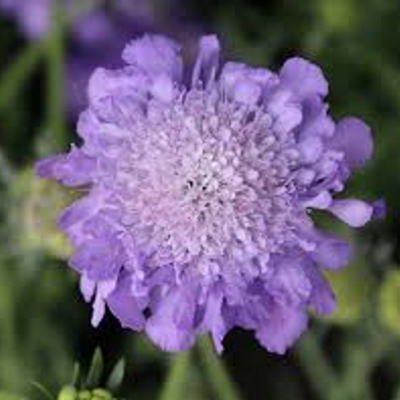
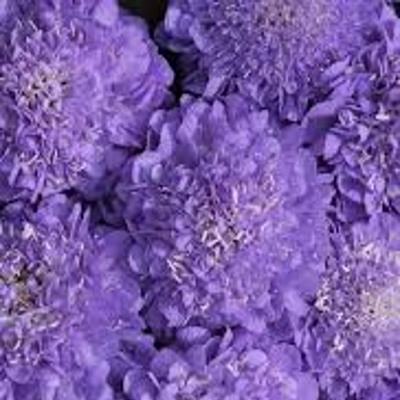
a.k.a Pincushion Flower
Elegant and uniform cut flower.
Matures in 90-100 days Package contains: 50 Seeds1 1/2–2 1/2", lavender-blue flowers stand tall on strong, slender stems. A dramatic addition to any bouquet or garden. Also known as mourning bride -
Out of stock
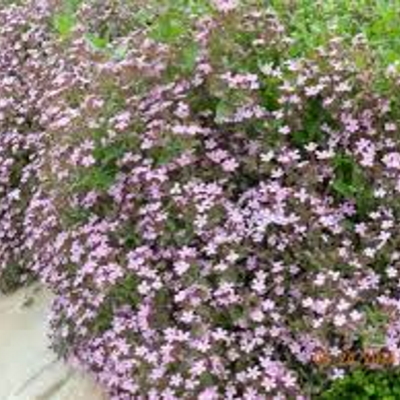
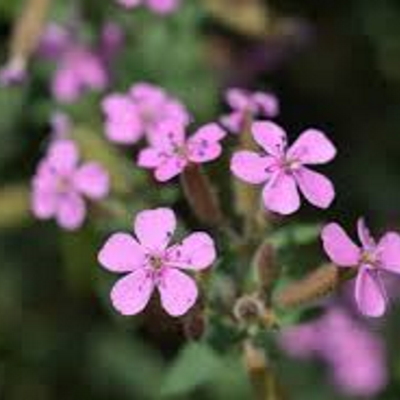 Soapwort is a favourite perennial for cool-alpine and rock gardens. This semi-evergreen blooms from May to August with five-petaled pink flowers joined at the base to form a nectar tube that is highly attractive to bees. Provide good drainage. The roots really can be used to make soap. Rock Soapwort looks marvelous in containers, but best in situations when it can trail and seed itself. Sturdy and easy to grow. Stems are thicker, stronger, taller, and easier to manage than those of annual gypsophila, an otherwise similar flower. 3/4 to 1" dusty pink blooms float above gray-blue, waxy foliage. Branching plant habit. Also known as cow soapwort.
Soapwort is a favourite perennial for cool-alpine and rock gardens. This semi-evergreen blooms from May to August with five-petaled pink flowers joined at the base to form a nectar tube that is highly attractive to bees. Provide good drainage. The roots really can be used to make soap. Rock Soapwort looks marvelous in containers, but best in situations when it can trail and seed itself. Sturdy and easy to grow. Stems are thicker, stronger, taller, and easier to manage than those of annual gypsophila, an otherwise similar flower. 3/4 to 1" dusty pink blooms float above gray-blue, waxy foliage. Branching plant habit. Also known as cow soapwort. -
-
Out of stock
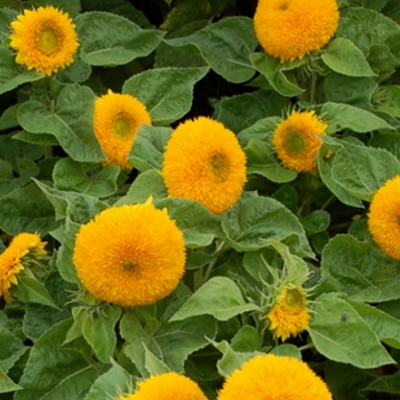
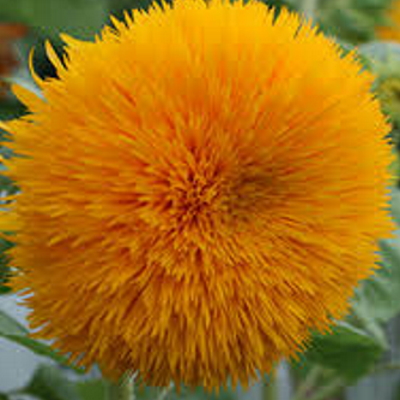 Sunflower ‘Teddy Bear’ is a short, bushy plant with fluffy, golden-yellow blooms that appear from mid-summer to the first frost in autumn. The mature size of Teddy Bear sunflower plants is 4 to 5 feet (1.4 m.). Growing Teddy Bear sunflowers by seed isn’t complicated. The most important thing is to plant seeds where your Teddy Bear sunflower plants will be exposed to full sunlight. Well-drained soil is also an absolute requirement for any type of sunflower. Plant Teddy Bear sunflower seeds after you’re sure all danger of frost has passed. Prepare the soil prior to planting sunflowers by digging a generous amount of compost, well-rotted manure, or other organic matter into the top 15-20 cm of soil. Sow seeds in groups of three, at a depth of ½ inch. Thin the plants to a distance of 40-60 cm when the true leaves appear. Water as needed to keep the soil moist, but not drenched, until your sunflower ‘Teddy Bear’ plants are established Sunflower seeds should be direct sown in the garden. If starting 3-4 weeks early plant in large cow pots so roots are not disturbed when transplanting into the garden.
Sunflower ‘Teddy Bear’ is a short, bushy plant with fluffy, golden-yellow blooms that appear from mid-summer to the first frost in autumn. The mature size of Teddy Bear sunflower plants is 4 to 5 feet (1.4 m.). Growing Teddy Bear sunflowers by seed isn’t complicated. The most important thing is to plant seeds where your Teddy Bear sunflower plants will be exposed to full sunlight. Well-drained soil is also an absolute requirement for any type of sunflower. Plant Teddy Bear sunflower seeds after you’re sure all danger of frost has passed. Prepare the soil prior to planting sunflowers by digging a generous amount of compost, well-rotted manure, or other organic matter into the top 15-20 cm of soil. Sow seeds in groups of three, at a depth of ½ inch. Thin the plants to a distance of 40-60 cm when the true leaves appear. Water as needed to keep the soil moist, but not drenched, until your sunflower ‘Teddy Bear’ plants are established Sunflower seeds should be direct sown in the garden. If starting 3-4 weeks early plant in large cow pots so roots are not disturbed when transplanting into the garden. -
Out of stock
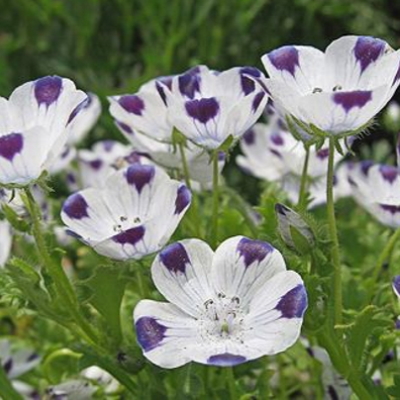
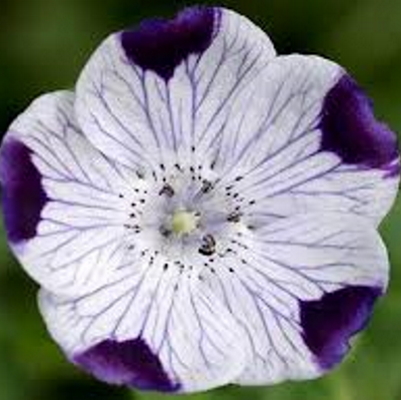 Five spot wildflowers are named for their distinct flowers: 2.5 cm light blue on white blossoms of five petals, each of which is tipped with a vivid, deep purple spot. They are reasonably compact plants that grow to 30 cm high and 20 cm wide and do not spread over the course of the summer. They prefer cool climates, germinating best in soil temperatures of 13-18 C. Perfect for cool springs. They should be able to survive if given lots of shade. They are annuals, and they’ll die back with the first frost. If allowed to die back naturally they reseeds and you will have new plants next year. They bloom consistently and impressively all spring long.
Five spot wildflowers are named for their distinct flowers: 2.5 cm light blue on white blossoms of five petals, each of which is tipped with a vivid, deep purple spot. They are reasonably compact plants that grow to 30 cm high and 20 cm wide and do not spread over the course of the summer. They prefer cool climates, germinating best in soil temperatures of 13-18 C. Perfect for cool springs. They should be able to survive if given lots of shade. They are annuals, and they’ll die back with the first frost. If allowed to die back naturally they reseeds and you will have new plants next year. They bloom consistently and impressively all spring long. -
Out of stock
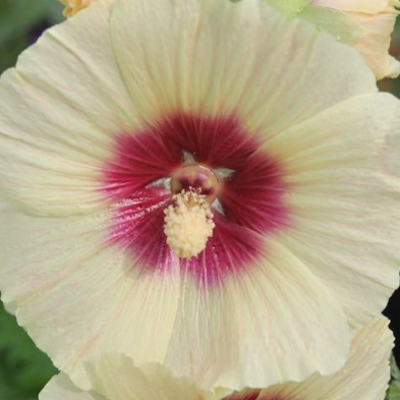
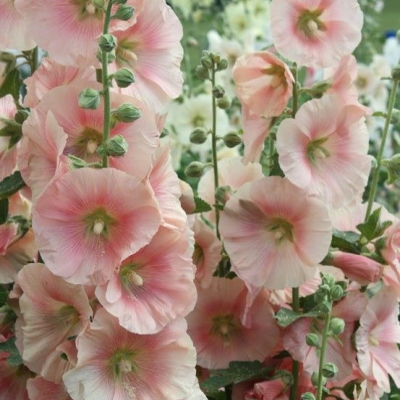 Hollyhock Seeds -Coral & Indian Spring Mix The semi-tall stalks of Indian Spring Hollyhock are filled with single and semi-double blooms in shades of pink, coral, white, cream, purple, and lavender. Prolifically blooming, Indian Spring Mix is known to bloom in its first year, which is unusual for Hollyhocks.
Hollyhock Seeds -Coral & Indian Spring Mix The semi-tall stalks of Indian Spring Hollyhock are filled with single and semi-double blooms in shades of pink, coral, white, cream, purple, and lavender. Prolifically blooming, Indian Spring Mix is known to bloom in its first year, which is unusual for Hollyhocks. -
Out of stock
 Tiny blue flowers are an iconic addition to any garden. Although not a ‘true’ forget-me-not, this species has very similar flowers. This easy-to-grow annual blooms just weeks after planting and grows in almost any sunny spot. Chinese Forget-Me-Not attracts bees, butterflies, and hummingbirds to the garden and makes for gorgeous cut flowers. Self-seeding annual.
Tiny blue flowers are an iconic addition to any garden. Although not a ‘true’ forget-me-not, this species has very similar flowers. This easy-to-grow annual blooms just weeks after planting and grows in almost any sunny spot. Chinese Forget-Me-Not attracts bees, butterflies, and hummingbirds to the garden and makes for gorgeous cut flowers. Self-seeding annual. -
Out of stock
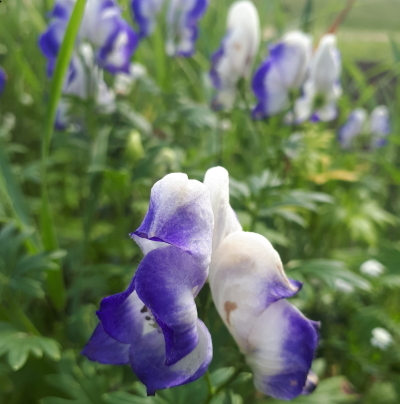 25 seeds per order. Purple Monkshood seeds 2020 harvest.
25 seeds per order. Purple Monkshood seeds 2020 harvest. -
-
Out of stock
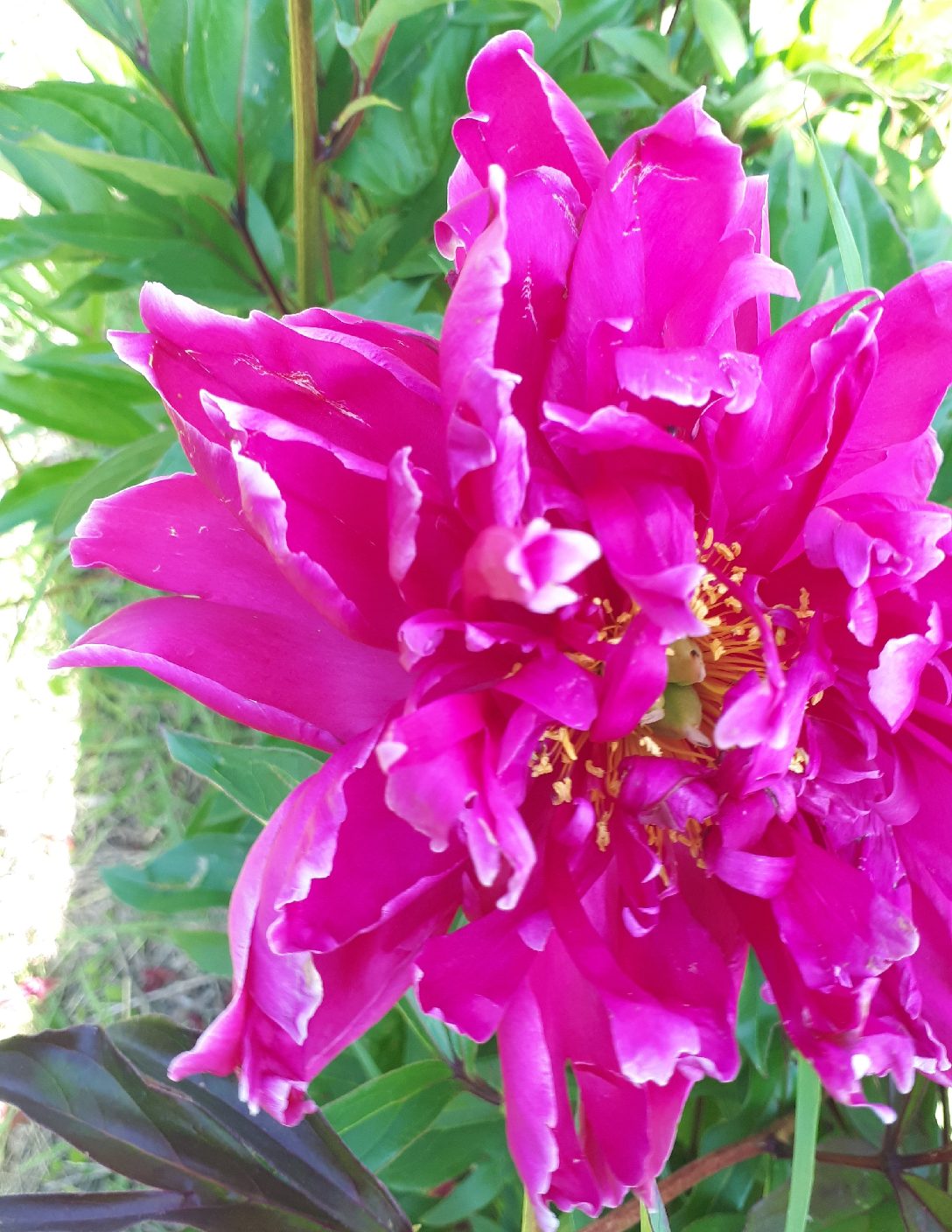
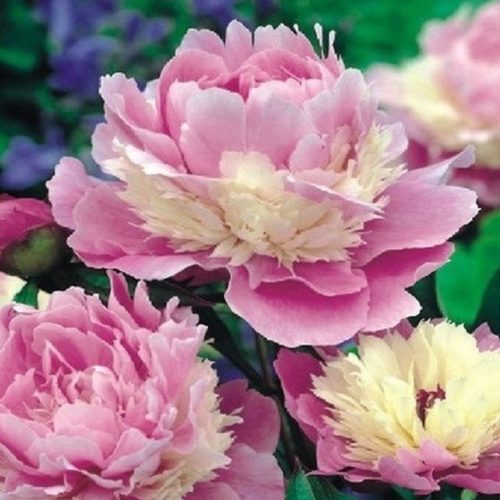 Mixed heritage variety peony plants. $10.00 each root or 5 roots for $35.00
Mixed heritage variety peony plants. $10.00 each root or 5 roots for $35.00 -
Out of stock
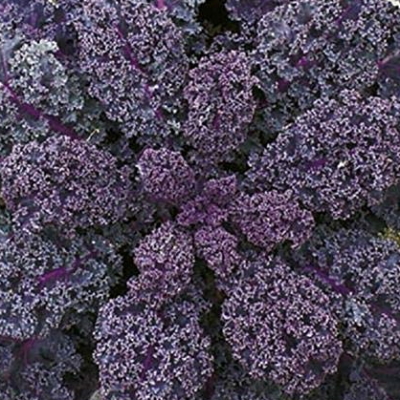
The broad, frilly, purple leaves grow on 60-90 cm tall, upright stalks. Red color on a blue-green background. Great for baby leaf and bunching. Scarlet has great flavour either as baby leaf or mature kale, and the flavour improves after frost. This kale is a must in an organic garden and is highly decorative in salads and stir-fries. Plant Scarlet kale in cow pots 4-6 weeks before the last frost, direct sow in early spring, and in mid-July for a fall crop. Scarlet Kale can grow 60-90 cm high. Boiling kale loses much of the nutritious properties while steaming and microwaving keep more cancer-fighting properties.
-
Out of stock
 This delightful Japanese Catmint has many merits. Both the foliage and the flowers are fragrant. It blooms the first year from seed, unlike most perennials. It is upright and nicely branched, rather than sprawling. Make it a centerpiece of your containers and sunny-to-partly-shaded garden areas! Panther Dark Blue walked off with the Bronze Medal at Holland's prestigious Plantarium competition in 2015. The attractive little plant is much more compact than other catmint species, standing just 20 cm high and 25 cm wide. The foliage is bright green, glossy, and toothed, releasing a strong, heavenly fragrance from spring through fall. Profuse bloomer! Medium to dark blue, these tubular flowers reach up to 5 cm long, held in nice clusters on the top of the plant. The blossoms are fragrant, and they begin in early summer and go right through into early fall. You'll be amazed by the flower power of this petite plant.
This delightful Japanese Catmint has many merits. Both the foliage and the flowers are fragrant. It blooms the first year from seed, unlike most perennials. It is upright and nicely branched, rather than sprawling. Make it a centerpiece of your containers and sunny-to-partly-shaded garden areas! Panther Dark Blue walked off with the Bronze Medal at Holland's prestigious Plantarium competition in 2015. The attractive little plant is much more compact than other catmint species, standing just 20 cm high and 25 cm wide. The foliage is bright green, glossy, and toothed, releasing a strong, heavenly fragrance from spring through fall. Profuse bloomer! Medium to dark blue, these tubular flowers reach up to 5 cm long, held in nice clusters on the top of the plant. The blossoms are fragrant, and they begin in early summer and go right through into early fall. You'll be amazed by the flower power of this petite plant. -
Out of stock
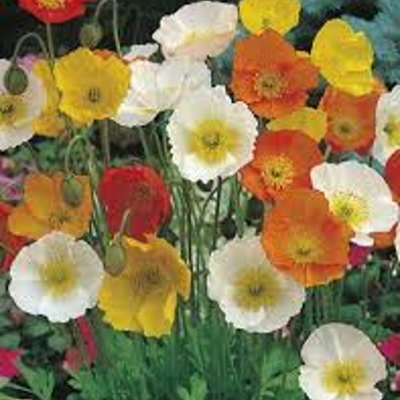 Papaver nudicaule. The Iceland Poppy is a hardy short-lived perennial. It self sows easily so will last for years to come. The cup-shaped blooms have a texture like crepe paper and appear in a range of subdued pastel colours; apricot, gold, tangerine, and white. Sow Iceland Poppy seeds in early spring or late fall where they are to grow permanently. The flower stalks grow to around 30cm tall and are among the longest-lasting poppies as cut flowers. Use a candlestick to seal the cut stem to prolong them as cut flowers. They are highly attractive to bees. Plant in late fall or early spring. Poppy seeds need to be cold stratified to germinate. Poppies only need soil that is ordinary and moist, but well-drained. The seeds should not be planted deeply; they just need to be compressed into the soil, as they need light to germinate. The best method for planting is to mix one part seed with 5 parts sand and scatter over the prepared growing area.
Papaver nudicaule. The Iceland Poppy is a hardy short-lived perennial. It self sows easily so will last for years to come. The cup-shaped blooms have a texture like crepe paper and appear in a range of subdued pastel colours; apricot, gold, tangerine, and white. Sow Iceland Poppy seeds in early spring or late fall where they are to grow permanently. The flower stalks grow to around 30cm tall and are among the longest-lasting poppies as cut flowers. Use a candlestick to seal the cut stem to prolong them as cut flowers. They are highly attractive to bees. Plant in late fall or early spring. Poppy seeds need to be cold stratified to germinate. Poppies only need soil that is ordinary and moist, but well-drained. The seeds should not be planted deeply; they just need to be compressed into the soil, as they need light to germinate. The best method for planting is to mix one part seed with 5 parts sand and scatter over the prepared growing area. -
Out of stock
 Single daisy-like flowers in shades of pink, red, rose, or white completely cover the 75 cm high bushy plants from May through June. Gorgeous spring and summer colour in sun or partial shade. Invaluable for cutting, cut as soon as colour shows. If cutting for dried flowers harvest immediately after bloom opens. Avoid high fertility. Moist, well-drained soil is best–try raised beds or containers if your soil is heavy. Hardy to Zone 5 with protection. These daisies often self-seed and interestingly, direct sown or self-sown established plants are hardier than transplants.
Single daisy-like flowers in shades of pink, red, rose, or white completely cover the 75 cm high bushy plants from May through June. Gorgeous spring and summer colour in sun or partial shade. Invaluable for cutting, cut as soon as colour shows. If cutting for dried flowers harvest immediately after bloom opens. Avoid high fertility. Moist, well-drained soil is best–try raised beds or containers if your soil is heavy. Hardy to Zone 5 with protection. These daisies often self-seed and interestingly, direct sown or self-sown established plants are hardier than transplants. -
Out of stock
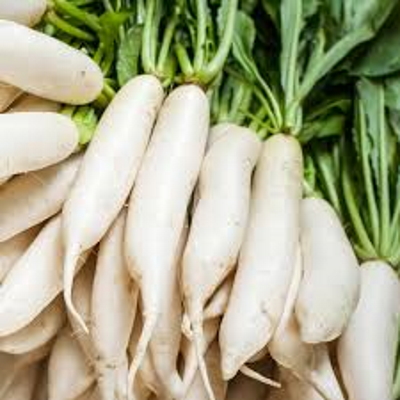 A very popular mild flavoured Japanese radish that resembles a large white carrot. Crisp, tender roots average 20 cm in length and 7 cm in diameter. The vitamin-rich roots are superb when eaten raw, sliced in salads, or peeled and diced for soups and stews. Try leaving some to grow seed pods which are delicious in salads or save your seeds for future plantings. Radishes thrive in very loose rich soil, plenty of water, and best grown in cooler weather.
A very popular mild flavoured Japanese radish that resembles a large white carrot. Crisp, tender roots average 20 cm in length and 7 cm in diameter. The vitamin-rich roots are superb when eaten raw, sliced in salads, or peeled and diced for soups and stews. Try leaving some to grow seed pods which are delicious in salads or save your seeds for future plantings. Radishes thrive in very loose rich soil, plenty of water, and best grown in cooler weather. -
Out of stock
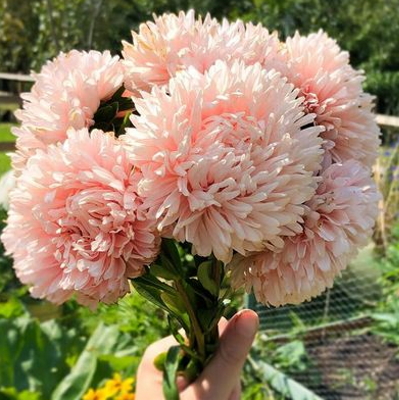
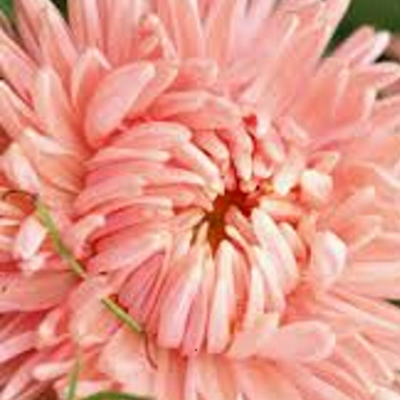 This annual aster provides soft peach-pink blossoms about 6-8 cm in diameter. They are relatively moderately easy to grow when following the seeding and growing guidelines. Cut blooms last 7-10 days while garden blooms last 14-20 days. Blooms will top 90 cm stems and will bloom all summer. Cut all spent flowers to promote prolong and enhance bloom duration.
This annual aster provides soft peach-pink blossoms about 6-8 cm in diameter. They are relatively moderately easy to grow when following the seeding and growing guidelines. Cut blooms last 7-10 days while garden blooms last 14-20 days. Blooms will top 90 cm stems and will bloom all summer. Cut all spent flowers to promote prolong and enhance bloom duration. -
Out of stock
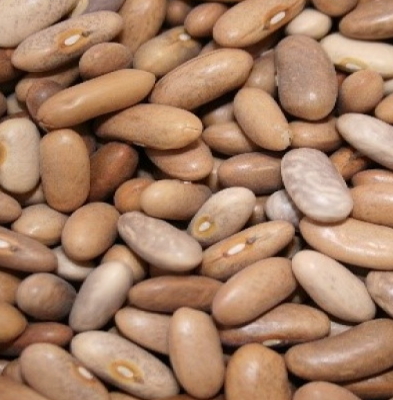
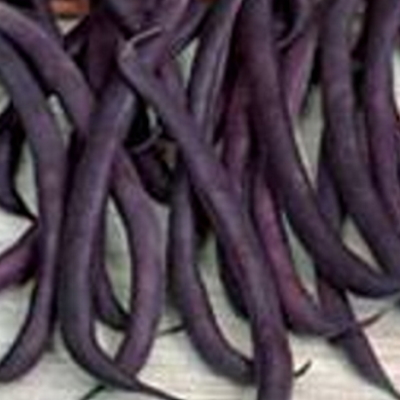 Royal Burgundy produces an unusual dark purple podded bean, though pods turn dark green when cooked. Enjoy an abundant yield of tender and delicious stringless beans. These beans are excellent when used either fresh or frozen. Tip: pick beans when they are about 10 cm long. Can be steamed, sauteed, baked, or used in recipes in place of French Green Beans.
Royal Burgundy produces an unusual dark purple podded bean, though pods turn dark green when cooked. Enjoy an abundant yield of tender and delicious stringless beans. These beans are excellent when used either fresh or frozen. Tip: pick beans when they are about 10 cm long. Can be steamed, sauteed, baked, or used in recipes in place of French Green Beans.
